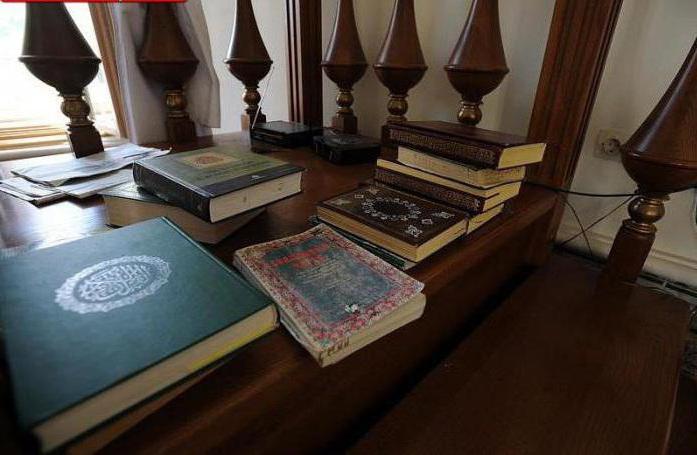Catherine II herself gave permission for the construction of the Al-Marjani mosque , which at that time was a passage to Kazan. The mosque also has another name - Yunusovskaya, in honor of the merchant family, which provided its content.
However, the Muslim temple got its real name thanks to the enlightener Shigabutdin Mardzhani, who served in it faithfully for forty years. Al-Marjani is a mosque that can be called an architectural landmark. It also has great historical significance. This is the first stone building erected in Kazan after the capture of Ivan the Terrible in 1552.
Architectural structure
Al-Marjani Mosque (Kazan) consists of two floors. On the south side of the building is the main entrance. The first floor is allocated for household needs, on the second there are prayer rooms. The entire mosque building is covered with richly decorated arches. On the second floor, the vaults are decorated with blue, green and golden stucco with gilded drawings of plants. Everything is in the style of traditional Tatar art.
Between the halls there is a staircase leading to the minaret. From the minaret, a spiral staircase leads to a rounded balcony for the muezzin. The minaret itself has virtually no decor. But the window openings in the form of high arches are decorated with elements of Tatar art. Al-Marjani is a mosque that is considered a real treasure of architecture.
The history of the monument
Kazan is a Tatar region with its colorful culture and traditions. And the Al-Marjani Mosque is a vivid confirmation of this. After a visit to Kazan by Empress Catherine II in 1767, it was decided to begin construction of the first monument of the Tatar cultural heritage. A huge role in the construction was played by the Yunusov family, they not only allocated a significant amount of money for construction, but also took the mosque fully for its support.
Merchant families of the Gizetullins, Galikeevs, Valishins and Kazakovs also allocated funds for construction. But it was the Yunusov family that actively participated in the development of the mosque. Later, when the building was already erected, Ibrahim Yunusov tried to improve it. For example, instead of a wooden fence, he built a stone fence, made a brick extension on the north side of the building, thereby lengthening it. He later increased the mihrab.
The merchant Usmanov rebuilt the minaret, and at the expense of the merchants Gizetullin and Valishin, an openwork metal fence was built around the circular balcony of the minaret. As a result, contemporaries can contemplate a real architectural monument - the Al-Marjani Mosque. Tatarstan can be proud of such a heritage.
Imam Shigabutdipa Marjani
Currently, Al-Marjani (mosque) is called the outstanding imam, who was not just a religious figure. Shigabutdip Marjani also became famous as a first-class teacher, public figure. It was he who first consecrated the history of the Tatars.
When the mosque was built, the merchant Yunusov began to invite the best ministers and teachers, among whom was Mardzhani, he then moved to Samarkand after finishing his studies in Bukhara. By order of Yunusov, people went there to deliver a public figure to Kazan. Marjani agreed. Despite his young age, he was entrusted with leading the sermon on Fridays and associating with parishioners. So he became an imam-khatib. Later, Mardzhani received the status of “Imam Mudarris” and began teaching at the madrassah.
Marjani's Contribution to Modern History
The educator made a huge contribution to the development of the mosque. By his will, a new madrassah was erected, although the merchant Yunusov was against such a restructuring. However, Mardzhani enlisted the support of other patrons, after numerous trials, he still managed to build a new educational building. The imam did not stop there. He also became famous for his unconventional approach to learning. In addition to religious subjects, astronomy, geometry and history were taught at the mosque. Marjani sought to combine the depth of the Muslim religion with modernity. He insisted that the Tatars study the Russian language, but was against ignoring the native language. Perhaps that is why in Soviet times it was the only Muslim temple of Al-Marjani. The mosque was visited by numerous foreign delegations mainly from Muslim countries.

The mosque also helps young Muslim entrepreneurs. Surprisingly, Tatarstan is saturated not only with architectural monuments, but also with places of cultural heritage, one of which is the Al-Marjani mosque (Kazan). Location address: st. K. Nasyri, d. 17.